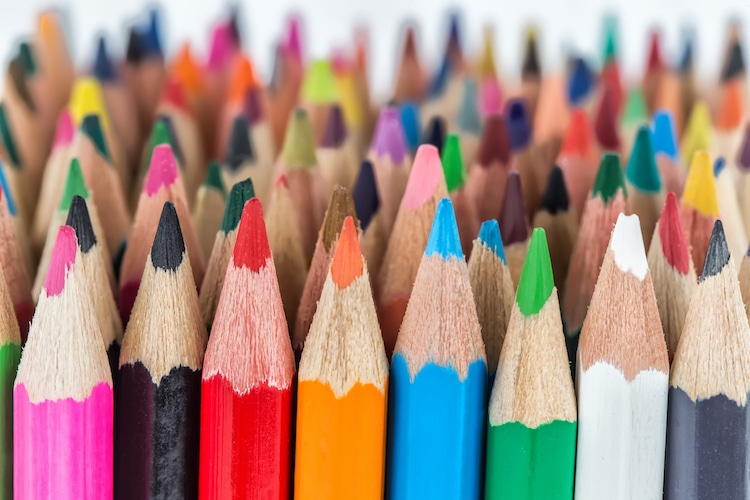A colored pencil is an art material made up of a pigmented lead, enclosed within a cylindrical wooden sleeve. Unlike graphite and charcoal pencils, the lead of colored pencils is made from wax or oil, containing varying proportions of pigments, additives, and binders. Pencils with water-soluble leads (watercolor) and pastel pencils are also manufactured. Moreover, there are colored leads for mechanical pencils. 
Colored pencils vary enormously in terms of quality and usefulness. The concentration of pigments in the lead, the photoresistance of the pigments, the durability of the colored pencil, and the smoothness of the lead are some indicators of the quality of a brand and, consequently, of its price. In general, there is no difference in quality between colored pencils with wax / oil-based leads and those with water-soluble leads.
In this article, American painter Eliyahu Mirlis is going to share some steps on how to draw with colored pencils.
Use Artist’s colored pencils: Mirlis indicates that artists’ colored pencils are of much better quality than those intended for children’s use. They are rich in pigments and apply very smoothly. A complete set of artist pencils is not cheap. Mirlis recommends you buy individual pencils from different brands and build your own collection.
Choose between wax and oil pencils: Artist’s colored pencils can be either oil-based or wax-based, and both types work well. Wax-based ones tend to be creamier than oil-based ones, and they work better with heat.
Very sharp pencils and a light touch: According to painter Mirlis, very sharp pencils are the most effective. Make several layers with a light touch. Avoid pressure, as it flattens the paper.
Try different media: Colored pencils can be applied to a huge variety of surfaces. Swap paper with friends to test as many surfaces as possible.
Dissolve the color to speed up the drawing: Spending a lot of time contemplating a drawing has no great merit. The important thing about the drawing is the final result. Eliyahu Mirlis indicates that there are several ways to speed up the drawing by melting the lead to make it easier to spread the color. This system also allows you to create saturated colors.
For more tips, you can read the articles of this painter.
A colored pencil is an art material made up of a pigmented lead, enclosed within a cylindrical wooden sleeve. Unlike graphite and charcoal pencils, the lead of colored pencils is made from wax or oil, containing varying proportions of pigments, additives, and binders. Pencils with water-soluble leads (watercolor) and pastel pencils are also manufactured. Moreover, there are colored leads for mechanical pencils. 
Colored pencils vary enormously in terms of quality and usefulness. The concentration of pigments in the lead, the photoresistance of the pigments, the durability of the colored pencil, and the smoothness of the lead are some indicators of the quality of a brand and, consequently, of its price. In general, there is no difference in quality between colored pencils with wax / oil-based leads and those with water-soluble leads.
In this article, American painter Eliyahu Mirlis is going to share some steps on how to draw with colored pencils.
Use Artist’s colored pencils: Mirlis indicates that artists’ colored pencils are of much better quality than those intended for children’s use. They are rich in pigments and apply very smoothly. A complete set of artist pencils is not cheap. Mirlis recommends you buy individual pencils from different brands and build your own collection.
Choose between wax and oil pencils: Artist’s colored pencils can be either oil-based or wax-based, and both types work well. Wax-based ones tend to be creamier than oil-based ones, and they work better with heat.
Very sharp pencils and a light touch: According to painter Mirlis, very sharp pencils are the most effective. Make several layers with a light touch. Avoid pressure, as it flattens the paper.
Try different media: Colored pencils can be applied to a huge variety of surfaces. Swap paper with friends to test as many surfaces as possible.
Dissolve the color to speed up the drawing: Spending a lot of time contemplating a drawing has no great merit. The important thing about the drawing is the final result. Eliyahu Mirlis indicates that there are several ways to speed up the drawing by melting the lead to make it easier to spread the color. This system also allows you to create saturated colors.
For more tips, you can read the articles of this painter.